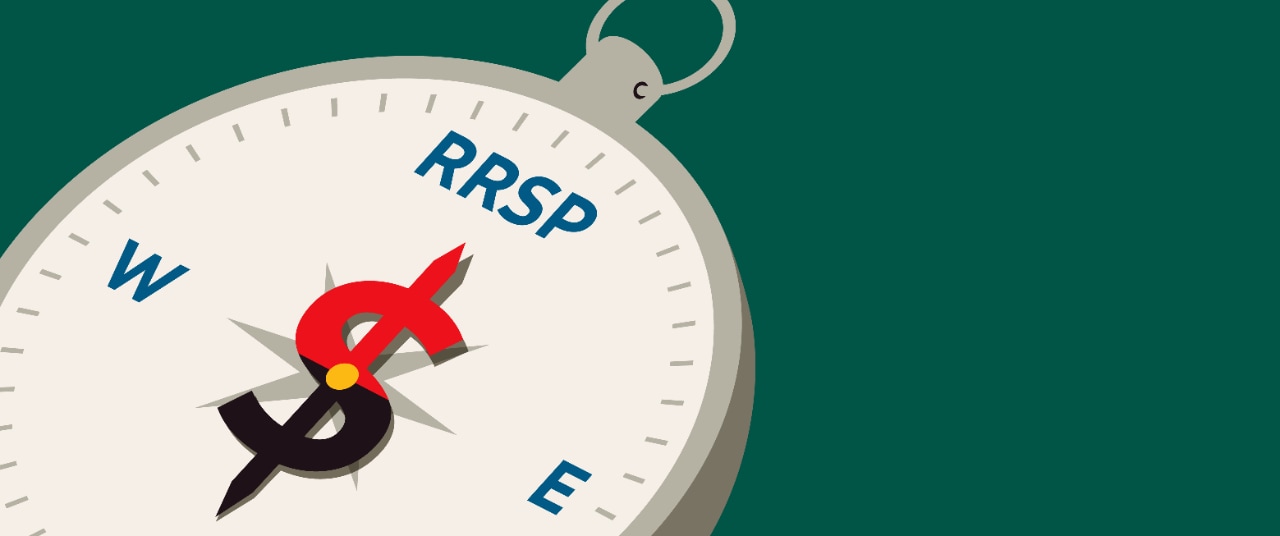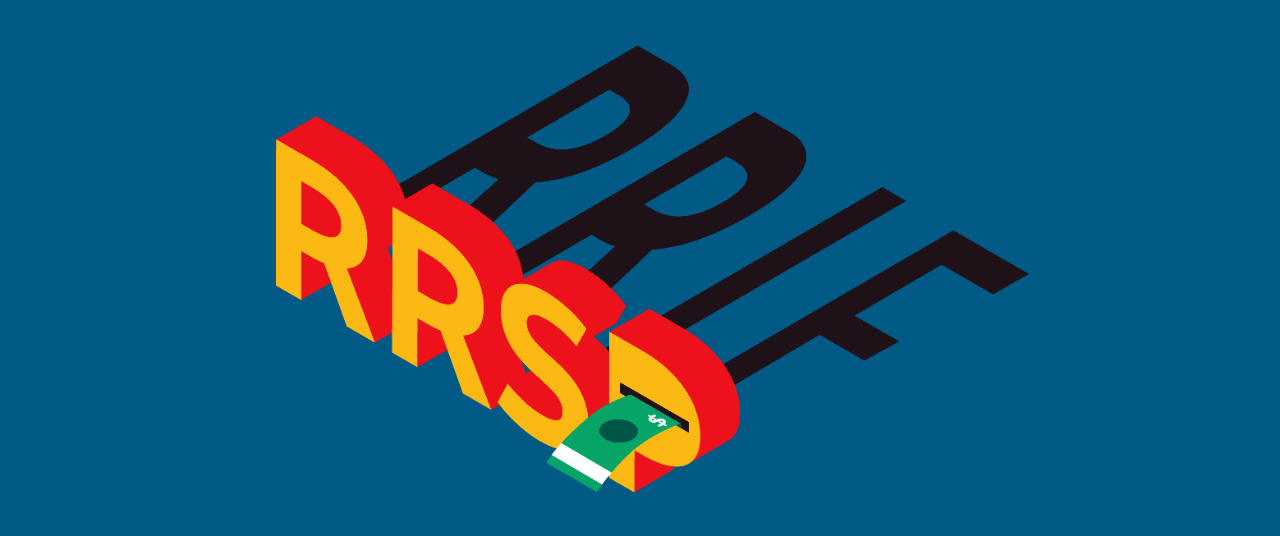Key takeaways:
It’s never too soon to start thinking about your future; actually being ready for it is the best feeling. Knowing you can support yourself and your family because you planned ahead is empowering.
Opening a Registered Retirement Savings Plan (RRSP) is just one way to help you enjoy the present and ensure you’re prepared for years to come.
Read on for a breakdown of what RRSPs are and how the work.

RRSP stands for Registered Retirement Savings Plan. As the name suggests, it’s a tax-advantaged savings program for retirement.
It’s registered with the Canadian government and the money you put in isn’t taxed until you withdraw it.
An RRSP is a savings plan that you can contribute to throughout your working life. It can hold a variety of savings and investing options, from cash to Guaranteed Investment Certificates (GICs) to mutual funds.
Contributions into an RRSP are tax-deductible, meaning the money you put into your RRSP is taken away from your taxable annual income amount, reducing the tax you pay on your current income.
Anyone under the age of 71 can open an RRSP as long as you are a Canadian resident, have a valid permanent social insurance number and have filed an income tax return in previous years.
Although RRSPs are specifically designed to save for retirement, there are other ways to use those savings, from education to long-term saving goals to even buying a home.
The most common use of the RRSP is as part of a retirement plan to help you get ready for your retirement. These savings combined with other government retirement benefits will come in handy down the road.
If you’re considering going back to school, an RRSP could help you with some of the financial strain. Withdrawals from your RRSP through the Lifelong Learning Plan (LLP) can be put towards paying the costs of full-time education and training. You can withdraw up to $10,000 a year, and these funds are not taxed – as long as they’re paid back according to the requirements.
Buying your first home is a huge milestone that requires careful consideration. If you use your RRSP to save for your first home, you can take out up to $60,000 under the Home Buyers' Plan (HBP).
However, it’s important to understand the Canada Revenue Agency (CRA) HBP criteria and follow the HBP repayment schedule. You have 15 years to repay the funds into your RRSP.
An RRSP is a valuable saving tool to help you reach your long-term goals. If your money is not locked into your RRSP, you may be able withdraw funds at any time. However, this isn’t generally recommended as the money will be subject to taxes.
RRSP contributions are the money that you deposit into your retirement saving plan throughout your working life.
The amount you can put into your account each year is capped at a maximum contribution amount. This is called an RRSP contribution limit – find your limit using the official MyCRA app.
Your RRSP deduction, or contribution limit, is the highest amount you’re allowed to deposit into your own, or your spouse’s, RRSP in a year. Remember to check your contribution limit with the Canada Revenue Agency before making a contribution.
You can contribute up to 18% of your previous year’s earned income, up to a maximum of $32,490 for the 2025 tax year, plus your unused RRSP contribution room at the end of the previous year. The RRSP annual contribution limit for 2026 is $33,810.
Have you missed out on making an RRSP contribution before? If you don’t use up your maximum yearly contributions from previous years, you can carry this unused contribution room forward and use it when your income is higher.
You can withdraw money from your RRSP at any time. However, it’s important to know that you’ll have to pay tax on the money you withdraw.
When your RRSP reaches full growth, at the end of the calendar year when you turn 71, you have two options for RRSP withdrawal:
- Withdraw funds in one lump sum – This is the option if you want access to all the money at once. If you take a lump sum, you will pay withholding tax.
- Convert the funds to a RRIF – When you retire, you can transfer the money into a Registered Retirement Income Fund where you’ll receive regular income from your RRIF. Keep in mind that you’re required to withdraw a minimum amount each year.

If you over-contribute to your RRSP, there may be penalties. Usually, you’ll need to pay 1% tax each month on contributions that exceed your maximum RRSP contribution limit by over $2,000.
An RRSP is a great way to start preparing for your future while growing your savings in a tax-advantaged plan. Now that you know more about how an RRSP works, consider how an RRSP might be right for you.
If you want help with your retirement planning, your Scotia advisor can help you create a plan that’s right for your future.


